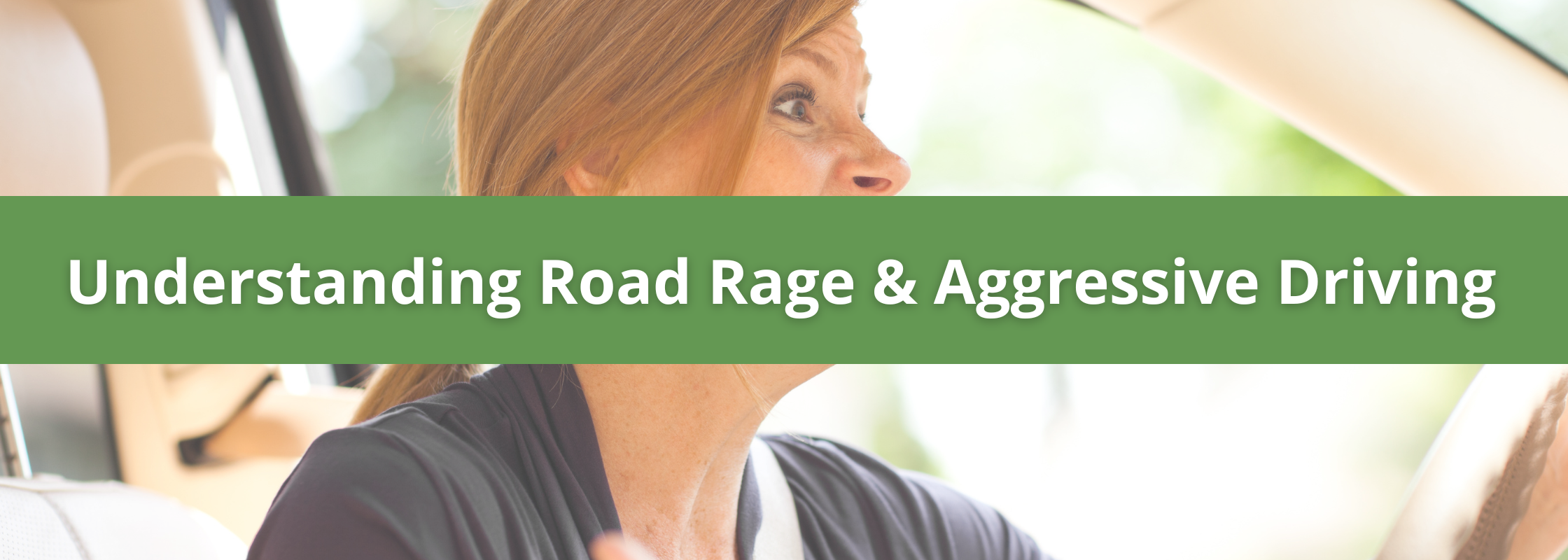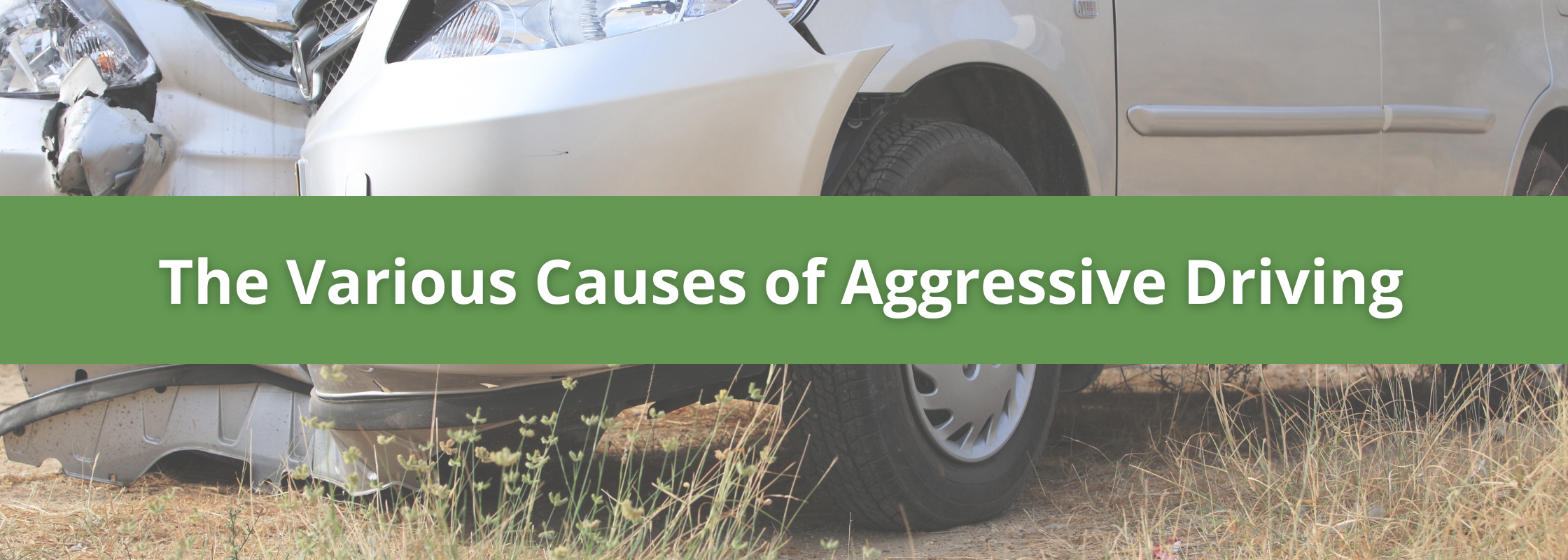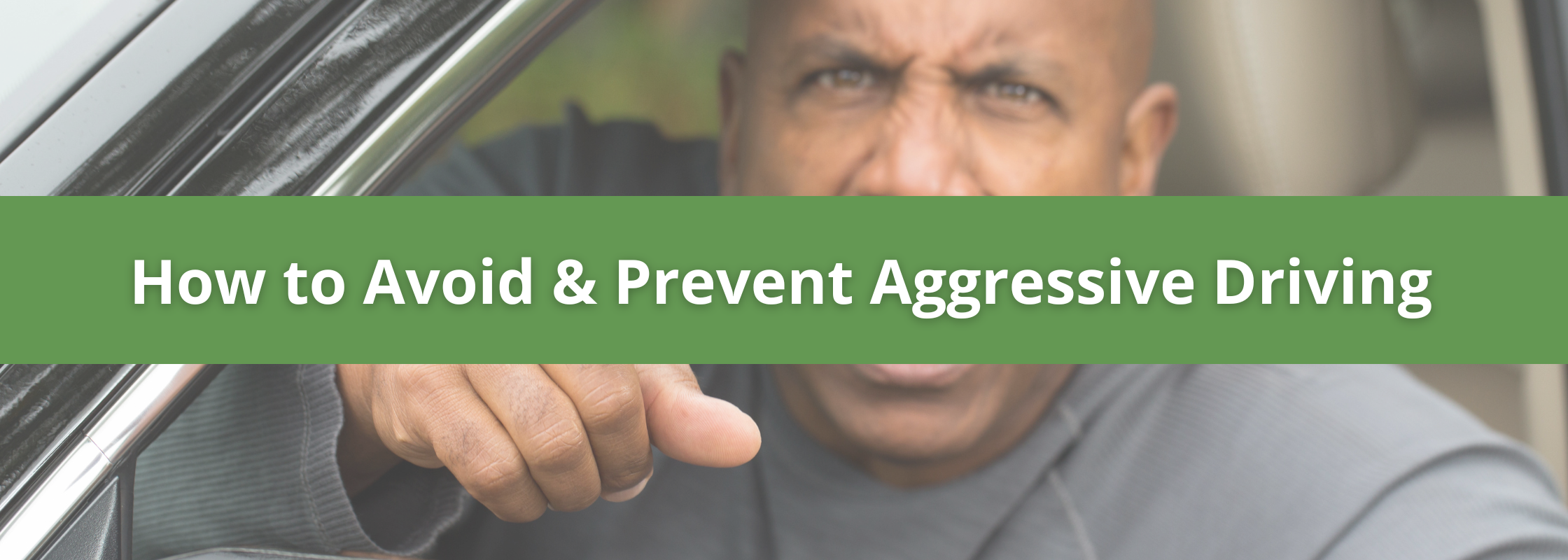
Road rage and aggressive driving are not new concepts. These troublesome situations have been around for years, with some drivers finding themselves on the receiving end of other drivers’ temper tantrums more often than not. But what really is road rage, and how does it differ from aggressive driving? And more importantly, how can you prevent yourself from falling victim to these behaviors? What should you do if you encounter another aggressive diver?
In this post, we’re going to look at a variety of reasons why people behave in such ways, some of the warning signs you might have missed (or still aren’t sure of), and how to avoid being part of the problem. Read on to learn everything there is to know about road rage and aggressive driving, how to prevent it, and how to keep yourself and others safe on the road.
What is road rage?
The road rage definition is pretty straightforward. The National Highway Traffic Safety Administration (NHTSA) defines road rage as any aggressive or angry behavior by an operator of a motor vehicle, most often on the road. This behavior may include rude gestures, verbal insults and/or physical assault.
The term was first coined in the United States in the early 1990s and gained popularity during the late 1990s. It can also be considered as a form of anger management problem that occurs when people experience stress while driving in traffic jams.
The symptoms of road rage vary from person to person but it always includes some sort of aggressive behavior such as shouting at other drivers in public areas like streets or highways.
What’s the difference between road rage and aggressive driving?
The two terms are often used interchangeably, but they’re not the same thing. Road rage is a one of many aggressive driving behaviors that involves an angry outburst or pursuit after an incident on the road. Aggressive driving is any unsafe or reckless maneuver that could lead to an accident or injury.
Road rage occurs when someone is angry while driving and loses control over their emotions. A person who has road rage will often break speed limits, stop signs or other traffic laws in order to get back at another driver who angered them on the road. Some instances of road rage involve physical violence between drivers or passengers who get out of their car to confront each other over an incident that happened while they were driving.
Aggressive driving encompasses many different types of behaviors that can lead up to an incident of road rage. These include tailgating (driving very closely behind another vehicle), lane-cutting (cutting off other vehicles in order to merge or change lanes), and not following traffic laws (speeding through stop signs or red lights).
The main difference between road rage and aggressive driving is that road rage is focused on another driver or group of drivers, while aggressive driving is focused on other vehicles or situations on the road.

What Are Some Causes of Road Rage & Aggressive Driving?
Road rage is a serious problem, and it’s more common than you might think. According to the AAA Foundation for Traffic Safety, aggressive driving causes 1,100 crashes, fatalities and injuries each day on our nation’s roadways. Below are some of the most common causes of road rage:
- Exhaustion: According to the National Sleep Foundation, more than half of Americans do not get enough sleep on a regular basis. Exhaustion makes it difficult to think clearly and makes us more susceptible to anger and frustration.
- Distracted driving: Distracted driving is another cause of road rage. We all know that texting while driving is illegal, but many people still do it because they feel that it’s safe if they’re only checking their phone every few minutes. It’s not safe at all! Even glancing at your phone while driving can cause a serious accident, so put down your phone while you’re in control of a vehicle!
- Aggressive Driving: Some people seem to enjoy speeding up or tailgating other drivers just for fun. If you’ve ever been tailgated on the highway, then you know how frightening it can be when someone gets too close for comfort! In addition to being dangerous, tailgating is also illegal in most states and municipalities around the country.
- Being in a hurry – The longer you’re stuck behind someone doing the speed limit in heavy traffic, the more likely it is that you’ll get frustrated. If they’re going slow enough to impede your progress, it can make you feel like they’re not just inconveniencing you but actively trying to prevent you from getting where you need to go on time.
But what is the #1 cause of road rage? It’s probably not what you think. The top cause of aggressive driving isn’t anger or frustration; it’s impatience.
When you get behind the wheel as a driver, your brain becomes focused on getting to your destination — and nothing else matters. You become laser-focused on the task at hand, which can lead to dangerous decisions like tailgating, speeding through yellow lights and merging into other lanes without regard for other drivers on the road.
Recognizing Road Rage & How To Prevent It
Road rage is a very real problem, and it can be a major hazard not only for you and your family, but also for other drivers on the road. Thankfully, there are several ways to avoid road rage.
The first step in preventing road rage is to be aware of your actions at all times. If you’re driving aggressively or speeding because you’re in a hurry, you may not be paying attention to the other drivers around you.
Secondly, try to stay calm when someone cuts you off or pulls out in front of you. Don’t honk your horn or flip them off because it’s not going to make them change their behavior. Instead, do your best to keep your cool and let them go ahead of you if the light turns green or the intersection has traffic.
If someone is driving aggressively around you, move over as far as possible to allow them room to pass. If they get too close, slow down a bit so they can safely pass. If this makes things worse, don’t hesitate to call 911 and report their license plate number so police can pull them over for reckless driving later on (if it doesn’t cause an accident first).
Avoid getting into an accident in the first place by maintaining proper distance between cars and watching out for others’ mistakes around curves and intersections. Be aware of pedestrians and bicyclists who might need extra space when crossing streets or riding with traffic flow.
Another way to easily prevent road rage is by avoiding tailgating other vehicles. Tailgating is one of the biggest causes of road rage. If someone is tailgating you, they’re likely anxious and frustrated — so don’t get angry with them! Instead, slow down if possible so they can pass safely without having to tailgate someone else ahead of them.
Don’t assume everyone else on the road is an idiot who doesn’t know how to drive safely — there are plenty of safe drivers out there! And if someone does make an unsafe move, try giving them room instead of getting angry about it; maybe they were distracted or had an emergency situation arise that forced them to make an unsafe move on purpose.

How To Identify & Avoid Aggressive Drivers
Aggressive driving can be difficult to recognize because it’s often subtle rather than overt. But there are some telltale signs.
- Tailgating — Not only is it dangerous for you to tailgate another vehicle; it’s also illegal in most states. Tailgating typically indicates an aggressive driver who lacks patience and wants to get ahead of other vehicles by any means necessary. In some cases, tailgating may be a sign of road rage.
- Frequent speed changes – If a driver is frequently changing their speeds, especially if they’re travelling way above the speed limit, that’s usually a good indicator they are driving angerly – try to avoid them and give them enough space to keep yourself safe!
- Honking their horn – Honking at other cars is annoying and can be dangerous if you do it while driving through an intersection or near pedestrians. But when someone does this continuously with no apparent reason, that’s an indication that they’re willing to use their vehicle as a weapon against other people on the road.
- Changing Lanes – A driver who is constantly changing lanes and weaving in and out of traffic is likely exhibiting unsafe driving behaviors. If you encounter this type of driver on the road, you’ll want to stay clear and give them a safe distance.
What causes people to act in this way? Drivers who exhibit aggressive driving behavior often suffer from low self-esteem and have a desire to be noticed by others. They may also feel like they are not getting the respect they deserve from other drivers. Additionally, they could be dealing with personal issues or stress that is causing them to act aggressive. No matter the reason, it’s in your best interest to avoid aggressive drivers whenever possible.
Can I Be Pulled Over For Road Rage or Aggressive Driving?
The short answer is yes. You can be pulled over for road rage, but you won’t necessarily get a ticket. It depends on numerous factors, like the law enforcement officer’s discretion and what they see, but they may cite you for other violations that are directly related to aggressive driving.
For example, if you’re tailgating someone and they slam on the brakes, causing you to rear end them, then that would be considered a separate violation than aggressive driving because it’s not necessarily a symptom of road rage. However, if you are honking your horn and gesturing at another driver because they cut you off or something like that, then that could easily qualify as an aggressive driving violation.
Road rage is not a crime in itself, but it can lead to aggressive driving and other violations that may result in criminal charges or traffic tickets. A driver who uses his vehicle to threaten, intimidate or harass another driver could be charged with disorderly conduct or harassment under the law in your state.
If another driver tries to pull you over and you don’t stop, they could report your license plate number to the police and have you arrested for failure to yield. If a witness reports aggressive driving, it may be enough evidence for law enforcement to pull you over and issue you a citation.
How Many Accidents & Crashes Does Aggressive Driving Cause?
According to the National Highway Traffic Safety Administration, aggressive driving is one of the most common causes of accidents. In fact, more than 1.6 million people are injured in traffic accidents that involve aggressive driving each year.
According to a study published by the AAA Foundation for Traffic Safety, these behaviors are associated with a higher risk of being involved in an accident or crash. In fact, drivers who engaged in these behaviors were 23 times more likely to have an accident than those who did not engage in any type of dangerous behavior while driving.
How To Report Road Rage Or An Aggressive Driver
If you experience road rage or see someone else being aggressive behind the wheel, don’t engage with them — just call 911. The police will want as much information as possible about the vehicle and driver involved in the incident so they can track them down and deal with them accordingly. If you’re worried about your own personal safety, than you can report an aggressive driver with completely anonymity.
Road rage incidents can be hard to prove unless there are witnesses or video footage of what happened. But if there are no witnesses or cameras, then it’s up to you to gather as much proof as possible before reporting the incident to the police. Often this includes taking photos of license plates, damage to your car and any other evidence that might help identify the driver involved in an incident.
Have Points On Your License From an Aggressive Driving Incident?
If you have points on your license from a moving violation stemming from aggressive driving behavior, or if your license has been suspended as a result of this violation, our online remedial driving course can help.
if you have any issue related to woocommerce then you can contact with Woocommerce Support

